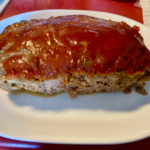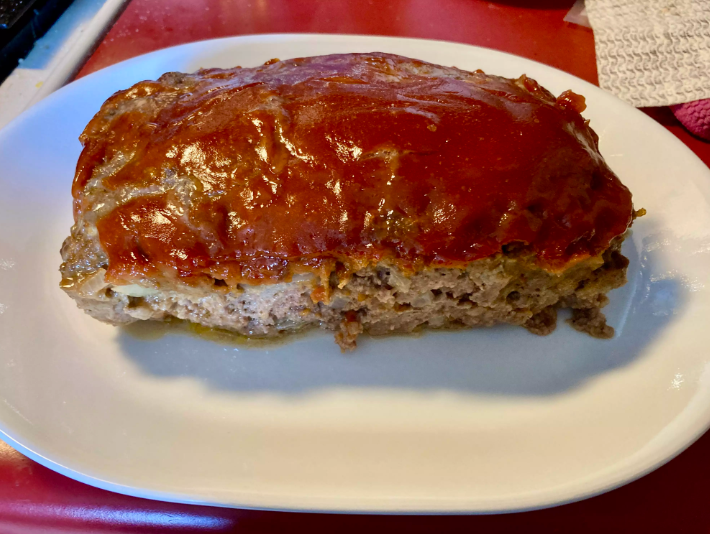Factors Affecting Cooking Time
The cooking time for meatloaf can vary significantly depending on several key factors. Understanding these can help you avoid undercooked or overcooked meatloaf:
Oven Type
- Convection ovens usually cook food by circulating hot air around the food, cooking it about 25% faster than a traditional oven. It is advisable to reduce cooking time or lower the oven temperature by 25 degrees if you are using a convection oven.
- Traditional ovens might have uneven heat distribution depending on the age and model, which can affect cooking times. Always place the meatloaf in the middle rack to try to achieve even cooking.
Meatloaf Size
- The thickness and size of the meatloaf play crucial roles in cooking times. A thicker or larger meatloaf will take longer to cook through completely.
- It is important to maintain a consistent shape and thickness when forming your loaf to promote even cooking.
Ingredient Variations
- Adding vegetables or other ingredients that contain moisture (like mushrooms or peppers) can increase cooking time, as these ingredients release moisture while cooking.
- Conversely, adding dry or absorbent ingredients such as extra breadcrumbs may decrease cooking time slightly by absorbing moisture and helping the loaf set faster.
By considering these factors and adjusting your cooking time accordingly, you can ensure that your meatloaf turns out perfectly no matter the conditions. Looking for inspiration? Read about the best temperature to cook meatloaf and why it matters.
Tips for Perfect Meatloaf
Achieving the perfect meatloaf with a crispy crust and moist center is an art. Here are some tips to help you master this classic dish:
- Maintain Moisture: To keep your meatloaf moist, include ingredients like chopped onions, minced garlic, or shredded vegetables. These add flavor as well as moisture.
- Avoid Overmixing: Mix your constituents until they’re just combined. Overmixing can lead to a thick and tough loaf.
- Use Lean Meat: Opt for lean cuts of meat to avoid greasiness. Mixing lean beef with a bit of pork can give you the best of both worlds—flavor and texture.
- Let It Rest: Allow your meatloaf to rest for 10-15 minutes after taking it out of the oven. This resting period helps redistribute the juices and makes your meatloaf easier to slice.
Suggestions for Toppings and Seasonings
- Classic Ketchup Glaze: Mix ketchup, brown sugar, and vinegar to make a sweet and tangy glaze. Apply a generous layer on top before the last 15 minutes of baking.
- BBQ Twist: Brush your meatloaf with barbecue sauce for a smoky flavor that complements the meaty taste.
- Herb Overload: Mix fresh herbs like parsley, thyme, and oregano into your loaf for a fresh burst of flavor. Sprinkling some over the top before baking adds to the crust’s aroma and texture.
- Cheesy Delight: Add a layer of shredded cheese on top during the last 10 minutes of baking for a gooey, golden crust.
By following these tips and experimenting with different toppings and seasonings, you can customize your meatloaf to suit any taste preference.
Frequently Asked Questions
What is the safe internal temperature for meatloaf?
The safe internal temperature for meatloaf to ensure it is fully cooked and safe to eat is 160°F (71°C). This temperature is recommended by food safety authorities to effectively eliminate harmful bacteria such as E. coli and Salmonella. Always use a meat thermometer to check the internal temperature of your meatloaf before finishing cooking.
How to tell if meatloaf is done without a thermometer?
If you don’t have a thermometer, there are a couple of methods to test if your meatloaf is done:
- Insert a Knife: Insert a clean knife into the center of the meatloaf and hold it there for a few seconds. Remove it and touch the knife tip to your wrist. If it’s hot, the meatloaf is likely done.
- Check the Juices: Look at the juices coming out of the meatloaf; if they are clear or very slightly pink, the meatloaf is probably done. If the juices are still red or bloody, it needs more time.
Differences in cooking times between beef, pork, and turkey meatloaf
- Beef Meatloaf: Generally, a beef meatloaf cooked at 375°F will take about 1 hour to 1 hour and 15 minutes for a 2-pound loaf.
- Pork Meatloaf: Pork needs to be cooked well to ensure safety. A pork meatloaf might take a bit longer, around 1 hour and 20 minutes to 1 hour and 30 minutes.
- Turkey Meatloaf: Turkey meatloaf cooks a bit faster as poultry tends to do so. Expect a 2-pound turkey meatloaf to take about 50 to 60 minutes.
These estimates assume that the meatloaf is baked in a standard oven and formed into a typical loaf shape. Always check the internal temperature to ensure proper doneness.
Alternative Cooking Temperatures
Exploring different oven temperatures can significantly affect the outcome of your meatloaf. Let’s compare cooking at 350°F versus 375°F:
- Cooking at 350°F:
- Time: Cooking meatloaf at 350°F generally requires a bit more time. A 2-pound loaf might take approximately 1 hour and 20 minutes to 1 hour and 30 minutes.
- Texture: This lower temperature allows the meatloaf to cook more slowly, which can help maintain moisture inside while still ensuring a fully cooked center.
- Result: The crust will be less crispy compared to higher temperatures, but the meat inside tends to be juicier and more tender.
- Cooking at 375°F:
- Time: At 375°F, the same 2-pound meatloaf typically cooks in about 1 hour to 1 hour and 15 minutes.
- Texture: The higher temperature helps to form a nice crust on the outside of the meatloaf, giving it a satisfying texture contrast between the outer layer and the moist interior.
- Result: The meatloaf turns out well-cooked with a more pronounced crust, ideal for those who enjoy a bit of crunch with their meal.
In conclusion, if you prefer a juicier meatloaf with a softer exterior, cooking at 350°F might be your best choice. However, for a crisper crust and a slightly shorter cooking time, 375°F is more suitable.
Best Practices for Serving and Storing Meatloaf
How to Slice Meatloaf for Serving
To ensure each slice is compact and doesn’t fall apart, check out how long you should cook a chuck roast for the perfect tenderness—it’s a great complement to your meatloaf nights.
- Let the meatloaf rest for 10-15 minutes after taking it out of the oven; this lets the juices settle.
- Use a sharp, thin-bladed knife to make clean cuts.
- Slice the meatloaf in sections of about 1 inch thick, which is ideal for serving.
Tips on Storing and Reheating Leftovers
- Storing: Cool the leavings to room temperature before chilling. Wrap them tightly in plastic serape or place in an watertight vessel. They can be stored in the refrigerator for over to 3- 4 days.
- Reheating: To maintain moisture, reheat slices covered with foil in the oven at 250°F until warmed through, or microwave them with a damp paper towel over the top to keep the meat moist.
By following these practices, you can enjoy your meatloaf fresh and delicious even days after preparation.
For more recipes follow me in Facebook and instagram .
Print
How Long to Cook Meatloaf at 375
- Total Time: 1 hour 15 minutes
- Yield: 6 servings 1x
Description
Learn the perfect baking time for meatloaf at 375°F. This easy, classic recipe delivers a juicy, flavorful meatloaf every time with step-by-step instructions and expert tips.
Ingredients
- 1 ½ pounds ground beef
- 1 cup breadcrumbs
- 1 large onion, finely chopped
- 1 egg
- 1 cup milk
- 1 tablespoon Worcestershire sauce
- 1 teaspoon salt
- ½ teaspoon ground black pepper
- ½ cup ketchup (optional, for topping)
Instructions
- Preheat Oven: Preheat your oven to 375°F.
- Prepare Mixture: In a large bowl, combine ground beef, breadcrumbs, and chopped onion.
- Add Wet Ingredients: In a small bowl, whisk together egg and milk, then mix into the meat along with Worcestershire sauce, salt, and pepper.
- Shape the Loaf: Mix until combined (do not overmix). Shape into a loaf and place in a loaf pan or on a baking sheet.
- Optional Glaze: Spread ketchup on top for a classic glaze.
- Bake: Bake in the preheated oven for 1 hour or until the internal temperature reaches 160°F.
- Rest: Let meatloaf rest for 10–15 minutes before slicing.
Notes
- Use a meat thermometer to ensure the internal temperature hits 160°F.
- For extra moisture, add grated vegetables like carrots or zucchini.
- Letting it rest ensures juicy slices and easier cutting.
- Prep Time: 15 minutes
- Cook Time: 1 hour
- Category: Dinner
- Method: Baking
- Cuisine: American










